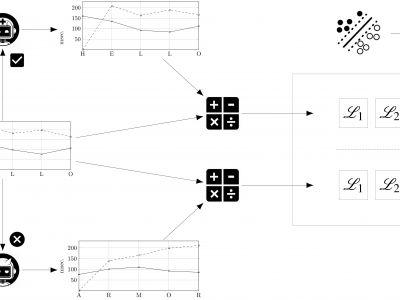Security

This dataset is a hand noted dataset that consists of two categories, evasion and normal methods. By evasion methods we mean the methods that are used by Android malware to hide their malicious payload, and hinder the dynamic analysis. Normal methods are any other methods that cannot be used as evasion techniques. Also, the evasion methods are categorized into six categories: File access, Integrity check, Location, SMS, Time, Anti-emulation. This dataset can be used by any ML or DL approaches to predict new evasion techniques that can be used by malware to hinder the dynamic analysis.
- Categories:
 543 Views
543 Views
Cyber-physical systems (CPS) have been increasingly attacked by hackers. Recent studies have shown that CPS are especially vulnerable to insider attacks, in which case the attacker has full knowledge of the systems configuration. To better prevent such types of attacks, we need to understand how insider attacks are generated. Typically, there are three critical aspects for a successful insider attack: (i) Maximize damage, (ii) Avoid detection and (iii) Minimize the attack cost.
- Categories:
 316 Views
316 Views
Communication of selected devices captured on LAN. The communication is stored in pcapng format. Files captures device's communication such as: connection to a network, configuration and other activities specific to each device.
Selected devices are:
- TP-LINK LB110
- TP-LINK HS100
- NETATMO smart radiators valves
- BML smart IP camera
- Categories:
 526 Views
526 Views
Physical layer secret key generation is a promising candidate to achieve one-time-pad encryption approach for the wireless communication system. However, in a static environment, the secret key rate is low due to the lack of channel time-variation. To solve this problem, this paper proposes a novel secret key generation scheme assisted by an intelligent reflecting surface with discrete phase shifts. In the scheme, legitimate nodes construct the dynamic time-varying channel by rapidly and randomly switching the phase of IRS elements.
- Categories:
 272 Views
272 Views
We generated attack datasets 1 based on real data from Austin, Texas.
- Categories:
 357 Views
357 ViewsDataset used in the article "The Reverse Problem of Keystroke Dynamics: Guessing Typed Text with Keystroke Timings". Source data contains CSV files with dataset results summaries, false positives lists, the evaluated sentences, and their keystroke timings. Results data contains training and evaluation ARFF files for each user and sentence with the calculated Manhattan and euclidean distance, R metric, and the directionality index for each challenge instance.
- Categories:
 668 Views
668 ViewsThe dataset is collected for the purpose of investigating how brainwave signals can be used to industrial insider threat detection. The dataset was connected using Emotiv Insight 5 channels device. The dataset contains data from 17 subjects who accepted to participate in this data collection.
- Categories:
 2411 Views
2411 ViewsDesign and fabrication outsourcing has made integrated circuits vulnerable to malicious modifications by third parties known as hardware Trojan (HT). Over the last decade, the use of side-channel measurements for detecting the malicious manipulation of the chip has been extensively studied. However, the suggested approaches mostly suffer from two major limitations: reliance on trusted identical chip (e.i. golden chip); untraceable footprints of subtle hardware Trojans which remain inactive during the testing phase.
- Categories:
 4269 Views
4269 Views
The data is the Xilinx ISE project and related HDL files.
- Categories:
 65 Views
65 Views


